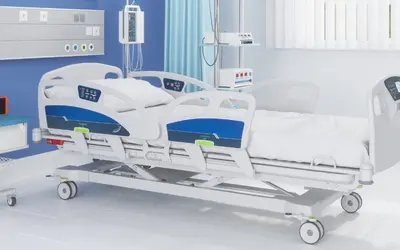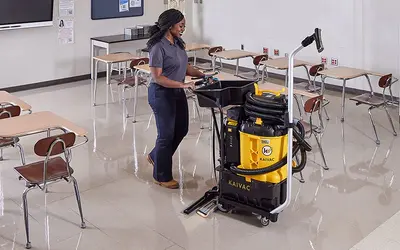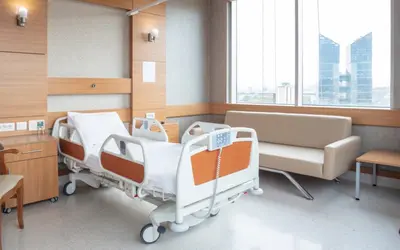Hospital Cleaning Best Practices to Keep Patients and Staff Safe

Keeping the facility safe for visiting patients and health care workers should be a priority for any hospital. However, this isn’t always the case. According to the Centers for Disease Control and Prevention (CDC), almost 100,000 people die every year from diseases acquired inside US hospitals. This scary statistic highlights some of the failures of traditional hospital cleaning methods. We suggest these hospital cleaning best practices suggested by North American public health officials and Kaivac Cleaning Systems.
1. Wear Gloves Properly
The improper use of gloves spreads dangerous bacteria. The Ontario Agency for Health Protection and Promotion recommends several techniques to control contaminants. Assign different gloves for household tasks, patient rooms, and jobs involving heavily soiled items. Always change gloves between patients and never wear them in hallways. Furthermore, change gloves when moving from a residential area to a shared restroom space. Likewise, cleaning crews must their wash hands after removing gloves every time.
2. Focus on High-Touch Areas
Every hospital administrator should direct staff to focus on the most-touched surfaces. These particularly include bed rails, doorknobs, phones, and remote controls in patients’ rooms. There is a greater likelihood of dangerous bacteria because more people have touched these areas.
3. Work from Clean to Dirty Areas
Starting from the dirtiest places and moving to cleaner parts of the facility is one of the biggest mistakes in modern commercial cleaning. For example, people often start in a restroom. There are too many chances to spread disease-causing soils from a bathroom or kitchen. This is especially the case when mops and rags are part of the cleaning system. On the contrary, hospital cleaning should progress from the rooms of the healthiest patients to the restrooms in the wards with the sickest patients.
4. Limit Air Pollution
There are many biological hazards in health care facilities. Therefore they must be contained in the trash bags and receptacles where they have been deposited. To keep bacteria out of the airstream, Ontario Agency for Health Protection and Promotion recommends that workers roll soiled bedclothes away from their bodies before placing them in linen bins. Not to mention, they should never throw them in the bins. Importantly, always tie trash bags without releasing the excess air in the bag.
5. Avoid Cross-Contamination
Probably the biggest challenge for health care cleaning crews is removing and disposing of contaminants right where they are in the hospital. Mops and rags are almost guaranteed to bring bacteria to other parts of the facility. Kaivac’s No-Touch Cleaning System offers the most complete solution to this problem. Your cleaning crew can be certain that bacteria doesn’t leave the room when they use the revolutionary technique of spraying, vacuuming, and disposing of contaminants.
6. Dispose of Contaminated Materials Safely
Knowing how and where to dispose of soils and solutions is as important as the cleaning system. Whether you have soiled linens, dirty cleaning fluids, or contaminated biological materials from clinics, make sure there is no chance for contamination during removal. No-touch cleaning makes disposal of dirty cleaning fluids easier than ever.
7. Minimize Chemical Content
Abrasive chemicals can irritate patients’ nasal passages and harm the skin of cleaning workers and hospital staff. Kaivac’s top-rated cleaning system offers a solution with up to 90 percent less chemical content than other solutions. That means that the most effective cleaning system is also safer.
These hospital cleaning best practices can help stop the spread of diseases in health care facilities. Kaivac makes a line of innovative cleaning machines, chemical cleaners, and disinfectants for hospital-grade cleaning.


